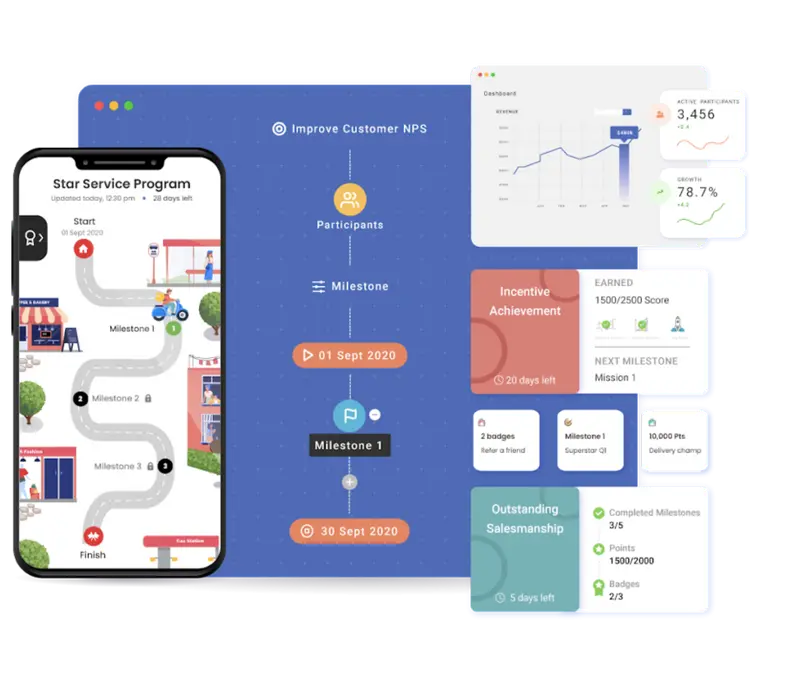Table of Contents
Excel has dominated the spreadsheet market since the 1990s, and it remains a powerful tool for data analysis. Unfortunately, its very power makes it incredibly dangerous even in the hands of experienced users.
Don’t get me wrong. Excel is amazing because:
- It’s versatile
- Makes data collation easy
- Let’s you summarize & visualize data
- Supports formulas
- Is used across the world
However, one study found that 88% of all spreadsheets contain one or more serious errors. Don’t we all remember the JP Morgan London Whale debacle where JP Morgan was hit with a $6 billion trading loss was caused by none other than an Excel error, back in 2012.
The problems with spreadsheets
Spreadsheets were never built to calculate incentives. They were built to automate simple mathematical calculations which had more math than logic. They were never built as a heavy duty programming language that could simplify 28 levels of nested ifs.

This picture demonstrates exactly what we do with Excel spreadsheets and incentive calculations. And we all know what happens when you try to fit a square block in a round pegboard.

Exactly. They never give you the results you want or deserve. So let’s stop forcing them to do something that they are not meant to do.
The biggest issues with an Excel spreadsheets are:
- Manual and time consuming
- Prone to human error
- Lacks real-time visibility and transparency
- Not built for scale
- Expensive
- Not auditable
- Not sharable
- Does not integrate with your current systems like ERP, CRMs etc.
- Not built for financial reporting & legal compliance
- Cannot automate payments
- Not built for incentives
Let us get back to the drawing board and know more
Here are more details to help you.
1. Manual and time consuming
Excel sheets cannot import data from existing sources and have to be administered manually which is both tedious, time consuming and leaves plenty of room for manual error. Data to be analyzed has to be copied and pasted or even worse, manually entered. It can be done for a handful of reps with little effort, but as the rows and columns in the data increase, it becomes virtually impossible making it extremely slow.
With Compass, you can easily capture live data and leave it to Compass to auto-calculate, real-time.
2. Prone to human error
Apart from being extremely time consuming, Excel sheets are prone to manual errors. It is not primarily a coding language and can only handle complex mathematical calculations but not complex logics. Incentive calculation is the exact opposite. It is more logic and less math. This is exactly where human intervention is required. This is where a business analyst builds a query with 50 indexes and 25 nested ifs to calculate incentive. God forbid if one of them goes wrong. It's fatally easy for user error to creep into the process and skew the results, potentially overpaying or underpaying your sales reps.
With Compass, you can easily build complex incentive programs with the familiarity of Excel within a few clicks.
3. Lacks real-time visibility and transparency
On excel sheets, or even its online versions, unless someone is manually updating it every minute, the data quickly becomes outdated. Excel sheets are not connected to live CRMs and ERPs and hence cannot be updated real-time. And as a result of this, there is no transparency or visibility of data.
With Xoxoday Compass, the sales reps, managers, admins, HR teams, finance team and the management have real-time access to incentive statements. Having this data readily available motivates sales reps to see what they’ve earned and how they can earn more. Apart from motivating your sales team, Compass provides complete transparency into the actual calculations behind the numbers and your team can trust the numbers they see because they have visibility into how they’re calculated.
4. Not built for scale
Experts describe Excel as a functional and programming language. Even though excel combines data analysis, visualization and programming together, it only works well when the data is small and limited to hundreds of records, can be entered manually or can be copy and pasted and the logic is more mathematical than complex.
Organizations face major challenges when they try to build a incentive software within Excel that requires complex logic making it impossible to calculate incentive at scale. With Compass, you get the best of excel like an intuitive interface along with variables, payout options and is scalable for small and gigantic enterprises and start ups alike.
5. Expensive
When you use Excel for calculating sales incentives, you put in significant resources, technology, human resources, and time, and these resources have a cost associated with them. Considering that 88% of the spreadsheets contain errors, everytime you come across an error, you incur the cost of all of these resources again making it uneconomical at all levels thus shattering the balance.
With Compass, you can automate the process and all changes can be handled with just a few clicks. It also saves a lot of time and eliminates inaccuracies and allows your team to spend time on other critical areas of the business.
6. Not auditable
Have you ever gone back to your excel sheet only to find out that it is not how you left it? Or have you ever overwritten your formula only to find #ERROR! across cells? If this gives you a sense of Deja Vu, let me tell you, you are not alone. Excel doesn’t offer a history of every change that was made to each individual cell and you can’t see who made the changes or if they even had the approval to do so. You also don’t have the ability to set up a chain of approvals. Despite Google sheets introducing features to overcome these problems, checking history of change for individual cells is impossible.
With Compass you can easily track history and make auditability easy by showing users who changed what, when. It also facilitates automation and lets you easily add approval hierarchy.
7. Not sharable
Excel is easy to share, right? Just drop it as an attachment in an email?
Perhaps it is. But not when you have a massive team of hundreds and thousands of employees who want to access the same file. This is where Excel collapses. You can create an incentive spreadsheet in Excel for your company but what if you want to share it with 50000 reps? Now imagine those reps are grouped across 15 different incentive plans. Now add in the complexity of team leaders being able to see the incentives of their team members but not other team members.
You can build your Excel spreadsheet, but you can’t divide and share it in a way where the users can only see the information that they need to see. This is exactly what makes it non-sharable and challenging.
With Compass, you get user controls. You can control who sees what data and it is always shared between stakeholders.
8. Does not integrate with your current systems like ERP, CRMs etc
Excel, despite its online versions, is not connected. Complex incentive calculations need real time data for all sources like the CRM, ERP and payroll. It is almost impossible to extract data from these sources, work on them and keep it updated, real-time. This process is slow, manual, error-prone and it isn’t real-time.
With Xoxoday Compass, you can easily pull this data from your existing systems. You can integrate Compass via webhooks, APIs or SDKs. Link and add gate filters in case of multiple data sources.
9. Not built for financial reporting & legal compliance
Excel is a business tool built for mathematical calculations and has a simple input, process, output mechanism. It does not allow you to configure tax implications, let alone based on slabs or geographies and makes financial reporting and legal compliance independent of incentive calculation and payouts.
Compass, apart from enabling fair, error free and transparent incentive calculations, takes care of user authentication and all security measures like GDPR or ISO and handles geographical tax implications and compliance.
10. Cannot automate payments
Excel is a calculation tool that can help you with the final incentive calculation. It cannot go even a step beyond that. It keeps incentive calculation independent of incentive payouts. To process payouts, you will have to manually release payments through the bank or through gift cards which leaves plenty of opportunity for manual errors. Excel does not allow you to connect it to any APIs or payment getaways to process payments.
With Compass, you can handle geographical tax implications and compliance before incentive payouts. You can consider any or all types of incentive payouts like bank transfers, reward catalog of more than 20000 digital gift cards, prepaid cards, experiences, and wallets across 80+ countries, credit notes or good old bank transfers. Payouts can be managed across multiple geographies & currencies seamlessly.
11. Not built for incentives
Excel is a blank canvas with two dimensions. It cannot handle complex calculations coupled with layers of logic. And you will have to resort to using 10s and 20s of nested ifs and indexes to arrive at the final value. God forbid if you go wrong with one of those 20.
With Compass, you can easily build a logic with n number of variables where your only input is defining the variable and Compass will take care of the rest. Apart from easy incentive calculation, Compass helps you motivate your sales reps with gamified sales contests with a library of templates to choose from. Compass is also created to handle complex tax implications across geographies and tax brackets, to enable seamless payouts.

Compass ensures 100% reduction in processing time, 10% saving due to budget leakage, 80% increase in sales productivity and 0% opaqueness in communication.




